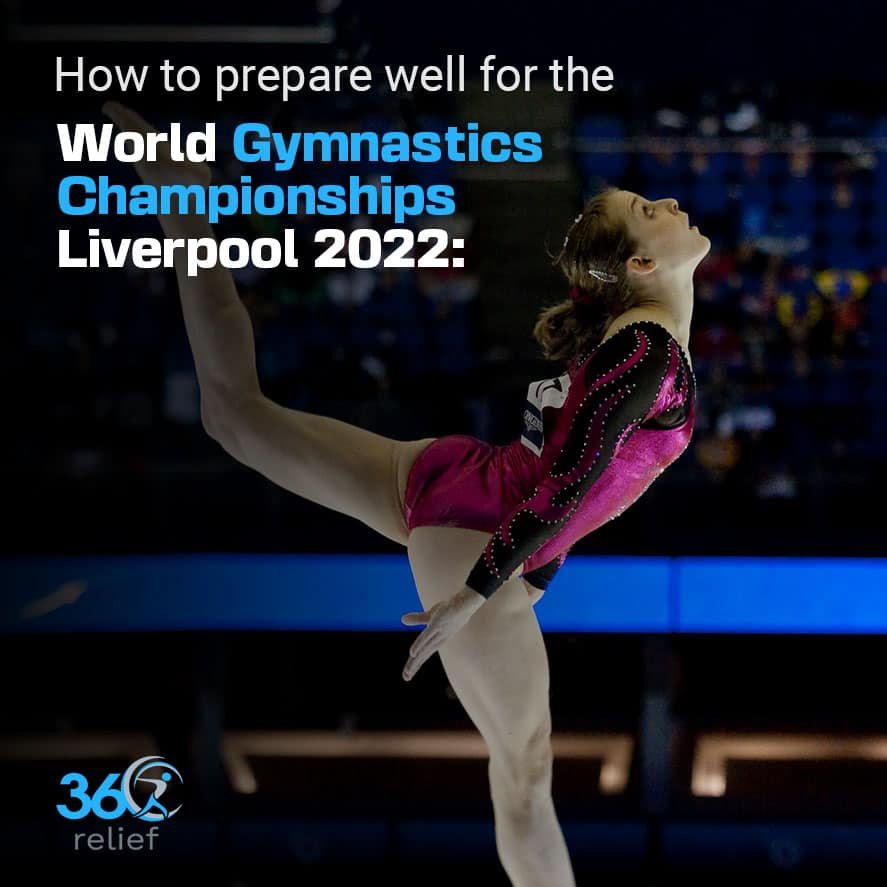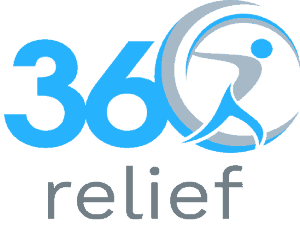
Make This Christmas Pain-Free: 10% Off on Supportive Wear!
Holidays are coming, which means that let’s welcome them with joy, laughter, and, of course, some comfort! At 360 Relief,

Table of Contents
ToggleThe world’s greatest gymnasts are going to appear on a global stage between October 29th and November 6th, 2022. Liverpool, England, is happily going to host the World Gymnastics Championships 2022, and the M&S Bank will be the venue for this championship. World Gymnastics Championships is one of the oldest sports or gymnastic events in the world. The first edition of the championship was planned and organised in 1903, and Antwerp, Belgium, first hosted this event or championship. Right from that time, the championship has been organised by different host countries, which is organised after one or two years. The recent championship was organised in 2021 and was held in Kitakyushu, Japan. However, China, Japan, and Italy were listed in the first, second, and third medal tables, respectively. For the 2022 championship, more than 400 athletes from across the world are going to participate in several actions.
The given competition schedule is announced officially for the 2022 world championship:
| Date | Sessions |
| Saturday, October 29th | Women’s Qualification |
| Sunday, October 30th | |
| Monday, October 31st | Men’s Qualification |
| Tuesday, November 1st | Women’s Team Final |
| Wednesday, November 2nd | Men’s Team Final |
| Thursday, November 3rd | Women’s Individual All-Around Final |
| Friday, November 4th | Men’s Individual All-Around Final |
| Saturday, November 5th | Apparatus Finals |
| Sunday, November 6th | Apparatus Finals |
Undoubtedly, gymnastics is one of the most watched and exciting games. In every world championship, hundreds of gymnasts participate to show their exceptional capabilities. As gymnasts are involved in repetitive movements, overuse injuries are possible in gymnasts. It has been reported that gymnasts experience overuse injuries and can hurt any part of their bodies. A study about gymnastic injuries from 2001 to 2011 has reported that 64 male gymnasts experienced 240 injuries; however, 55 female gymnasts experienced 201 injuries.
The injury incident is estimated to be 8.78 per 1000 athlete exposures for men and 9.73 per thousand for women. Female gymnasts are more prone to injuries than male gymnasts. However, studies have also shown that 24.4% of female injuries require surgery, and the ratio of surgical treatment in men is 9.2%. The anatomic structures most often injured in men are the wrist and hand; however, in women, these are the foot and ankle. Moreover, overall injury rates were highest in freshman-eligible athletes. Here we come with the possible injuries found in gymnasts:
Labral tear, also known as a SLAP tear, may occur in gymnasts during any gymnastic practice. However, ring and bar specialists are more vulnerable. The injury is characterised by pain that initially resolves but tends to recur when you return to your practice. In order to establish a absolute diagnosis, an MRI is helpful. Nonsurgical treatments for a SLAP tear may include rest, physical therapy, corticosteroid injections, and platelet-rich plasma injection. Healthcare professionals also suggest wearing shoulder support braces to relieve pain and other symptoms. However, more severe conditions may require surgery – an arthroscopic procedure.

During gymnastic practices, your wrist may be subject to force, exceeding twice the body weight. The common symptoms of a wrist sprain may include pain, swelling, tenderness, bruising, loss of motion, and weakness. Reducing the training volume helps relieve the symptoms. Wearing wrist support braces helps immobilise your wrist, helping speed up recovery.

Anterior cruciate ligaments run through your knees, helping connect your thigh bone to your shin bone. As well as this, they play a vital role in stabilising your knees. The common cause of ACL tear is a sudden pivoting or cutting manoeuvre during any gymnastic activity. The ACL tear may result in severe pain, swelling, inability o putting weight on your knees or legs, and a significant change in the range of motion. The treatment process depends upon the severity of the injury. Grade I and II level tear may recover through a progressive range of motion, physical therapy, and other exercises. However, grade III-level tears may require surgery and take up to 15 months to heal properly. Healthcare professionals advise wearing knee support braces to relieve pain and speed up recovery.

Gymnasts can experience several problems with their feet and ankle, and Achilles tendinitis is a common complaint by many gymnasts. Achilles tendinitis is an irritation and inflammation of the Achilles tendons – tendons just above the back of your heel. The condition usually results in calf soreness that exacerbates with jumping and landing. The initial treatment options for Achilles tendinitis may involve stretching, activity adjustment, and calf or leg exercises. However, foot immobilisation with the best ankle support braces helps with acute symptoms.

Gymnasts often experience foot or ankle sprain, which generally happens during an awkward landing or when gymnasts roll their ankles inwards. However, gymnasts have a high chance of rolling ankles as they are involved in continuous jumping or tumbling. Popping sounds at the time of sprain and dark bruising are the common symptoms. Treatments may vary depending on your condition. However, wearing ankle support braces helps with mild to moderate symptoms.

Whether you are a professional gymnast or occasionally appear as an amateur gymnast, injuries are possible. Injuries usually happen due to carelessness, overuse, and wrong techniques. However, experts suggest some effective tips and preventive measures by following which gymnasts can save themselves from overuse injuries. So, let’s have a look at these tips and preventive measures to help you get an injury-free gymnastics experience:

Holidays are coming, which means that let’s welcome them with joy, laughter, and, of course, some comfort! At 360 Relief,

Happy Cyber Monday to everyone; it is a perfect occasion for 360 Relief to offer a special discount of 10%

This Black Friday, take advantage of exclusive 10% savings on some of 360 Relief’s best-selling compression socks and support braces!

Everyday life includes walking up stairs, but knee discomfort can make this basic activity difficult. Walking up or down stairs

Cooking is a beloved activity for many, but for those struggling with knee pain, standing in the kitchen can quickly

We’ve all been there. On a ride in a car, for instance, to the country home for a weekend break

Gardening is enjoyable for many people and those who like tending to their lawns and plants usually find it therapeutic

Do you have a painful knee problem that takes you to physiotherapy…for an injury that hampers your daily living…your workout

Training can be very much associated with some pains and injuries that may be experienced by the trainers. As there

Office workers often spend hours seated at their desks, focusing on tasks while unknowingly putting their health at risk. The

Winter often brings more than just a change in weather; for many, it also means dealing with unexpected swelling in

Compression socks have become a critical tool for athletes across all sports. Whether you’re a marathon runner, cyclist, or weightlifter,

October marks the beginning of National Cholesterol Month in the UK, a time dedicated to raising awareness about cholesterol and

Overall, there is nothing to match the experience of watching musicians perform live in an outdoor concert in Glastonbury. However,

Today charity runs have gained popularity as a way of raising cash for a cause in the United Kingdom. From
Please enter your email to subscribe to our newsletter for exclusive offers and updates
Copyright © 2025 | 360 Relief Ltd | Sitemap

